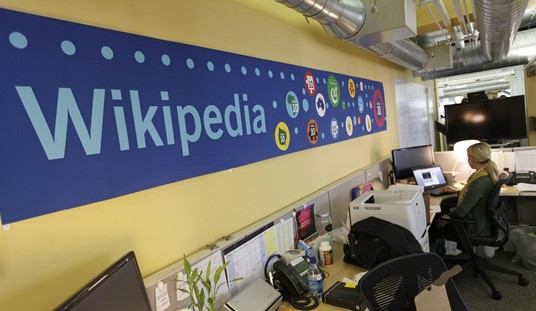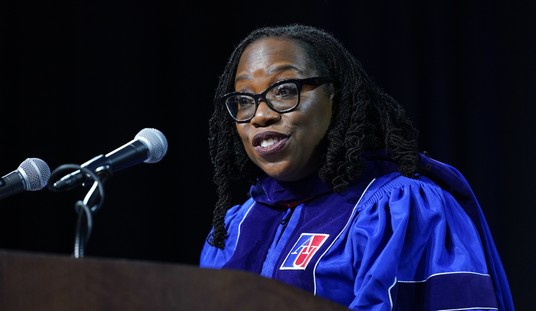I think he would have gotten the benefit of the doubt from his colleagues for this flub if not for the political circumstances of yesterday’s announcement. To all appearances, it was Trump’s angry tweet on Saturday that finally jarred the FDA into approving emergency-use authorization for convalescent plasma. That made the EUA seem less like the considered judgment of scientific professionals than a bit of propaganda provided to the president on the eve of his convention. So when FDA chief Stephen Hahn misstated the results of a study about plasma’s effectiveness, what was likely an innocent mistake came off like deliberate disinformation.
"A 35 percent improvement in survival is a pretty substantial clinical benefit," FDA Commissioner @SteveFDA said in relation to the convalescent plasma emergency use authorization issued today. pic.twitter.com/Dd97vLSZeL
— U.S. FDA (@US_FDA) August 23, 2020
The 35 percent number was reiterated by an FDA spokesman:
Convalescent plasma has shown to be beneficial for 35% of patients. This risk reduction figure – shown in chart below – is from @MayoClinic data from expanded access program that was analyzed by FDAA for the emergency use authorization announced today. pic.twitter.com/UNAWrhHa3p
— FDA Spokesperson (@FDASpox) August 24, 2020
The Mayo study did show a 37 percent relative reduction in mortality for patients who received plasma. But Hahn was speaking in absolute terms, i.e., give plasma to 100 people and you’re apt to save 35-37 who otherwise would have died. That’s not what the data says.
Hahn’s statement that if “100 people were sick, 35 would be saved by plasma” is shockingly wrong. The risk reduction between early plasma and late plasma is relative, not absolute. In this trial, if 100 people were treated, 3.2 fewer would die. https://t.co/Fgz4MVVqNp
— Jonathan Reiner (@JReinerMD) August 23, 2020
In this statement, @SteveFDA claims 35 per 100 people treated with plasma would be saved. The Mayo observational data indicates that would be 3 people saved at 7 days, or 5 at 30 days. And that was via exploratory analyses. Not only blatantly wrong; an egregious public statement. pic.twitter.com/DlNVHvDJnB
— Eric Topol (@EricTopol) August 24, 2020
The FDA was successfully convinced that statistical significance does not matter!
It's like someone flipped a coin 7 times; 4 heads and 3 tails came up and they concluded heads is more likely.
That's literally the level of analysis we are dealing with here.
Lives at stake.
— Jeremy Faust MD MS (ER physician) (@jeremyfaust) August 23, 2020
Not only that, but the “study” Hahn was relying on was observational, and the data came from a mere subset of people who were part of that study. Scientists were aghast that he’d make a claim this bold without data from a fully enrolled randomized clinical trial, where some participants are given a placebo for comparison purposes.
#COVID19 Still can't believe the head of FDA made such misleading stmt of "35% improvement in survival" based on subgroup of subgrp in an observational study. His explanation was also wrong.
This shows either intellectual dishonesty or a lack of basic understanding of statistics https://t.co/GuAFgjPGWz
— Andy Biotech (@AndyBiotech) August 24, 2020
This 35% reduction in deaths number….
Comes from a NON-PEER REVIEWED STUDY from June.
We have an FDA emergency use authorization based on a study that has not even been accepted by a medical journal.
If it was REMOTELY good, that study would be in a medical journal already.
— Jeremy Faust MD MS (ER physician) (@jeremyfaust) August 23, 2020
Here's the 8/12 preprint the claim is based onhttps://t.co/aNWZcyJYAh
These were 2 exploratory analyses without control patients, with multiple confounders, eg early v late Rx
The improvement of survival with a high antibody level was a post-hoc determination from stored samples pic.twitter.com/r9Aj2YUCrf— Eric Topol (@EricTopol) August 23, 2020
The “35 percent” claim is the basis for the White House’s assertion that plasma is a “breakthrough” treatment. In reality, according to experts who support and oppose the FDA’s emergency-use authorization, plasma is likely to have a “relatively modest” or “incremental” benefit to patients. That doesn’t mean the EUA was wrong — if plasma is safe to use, any benefit is of some value — but the degree of hype and the timing of the announcement reeks of politicization.
Some doctors, including ones whose names are familiar, think there’s so little reliable evidence right now that plasma benefits patients that the EUA shouldn’t have been granted. From a Times story published last week, before the FDA acted:
Several top health officials — led by Dr. Collins, the director of the National Institutes of Health; Dr. Fauci, the government’s top infectious disease expert; and Dr. Lane — urged their colleagues last week to hold off, citing recent data from the country’s largest plasma study, run by the Mayo Clinic. They thought the study’s data to date was not strong enough to warrant an emergency approval.
“The three of us are pretty aligned on the importance of robust data through randomized control trials, and that a pandemic does not change that,” Dr. Lane said in an interview on Tuesday.
Without data from a clinical trial, emergency authorization is “reckless and premature.” As I understand it, the objection isn’t so much that the plasma might cause harm, it’s that resources that could be devoted to more promising treatments will now be devoted to plasma without any idea as to whether it works or not. It’s the hydroxychloroquine fiasco all over again — which, ironically, is part of the reason why we don’t have any clinical data on plasma right now.
And I don’t know if we’re ever going to have it. With plasma widely available under the FDA’s EUA, what person infected with COVID would submit themselves to a trial where they might get a placebo when they can just go to the hospital and get the real thing instead?
In the end, argues David Shaywitz, by bullying the FDA into greenlighting plasma Trump will end up hurting his own political interests. The more energy is devoted to rolling out unproven remedies, the less energy is spent developing more promising remedies. And the more it looks like Trump and cronies like Hahn are playing politics with treatments, the more suspicious those treatments will come to appear:
But perhaps less obviously, the president might also do well to recognize the urgent need for COVID-related drug and vaccine approvals and authorizations to be regarded as credible. After all, drugs will only be used if prescribing doctors believe the products could be helpful, and vaccines will only be accepted if both doctors and patients believe they are likely to be safe and effective…
The more Trump is seen to be putting his finger on the scale, the less credible new treatments will likely be seen by doctors and patients alike—including those that might truly be effective. This means delayed adoption of potentially valuable therapeutics, and a longer time to capture both the medical and economic benefit at the population level.
The counter to that logic reportedly came from the highly MAGA-fied Peter Navarro, a non-scientist who’s presumed to lecture Fauci about the supposed efficacy of hydroxychloroquine in the past. “You are all Deep State and you need to get on Trump Time,” Navarro reportedly told FDA officials at a meeting a week ago. A few days later, Trump sent his tweet accusing “deep state” personnel at the FDA of slow-walking approval for plasma. A day later, Hahn finally caved and granted the EUA. I have less faith in the benefits of plasma today than I had a week ago.
We all know what’s coming next:
The president’s political advisers believe that making people believe a vaccine is imminent by Election Day — whether true or not — is key to his prospects for winning.
— James Hohmann (@jameshohmann) August 23, 2020
Today's propaganda on plasma sets the stage for a future announcement on an unproven vaccine.
They've shown they WILL GAMBLE WITH YOUR LIFE.
— Jeremy Faust MD MS (ER physician) (@jeremyfaust) August 23, 2020
Coincidentally, last night the Financial Times reported that the White House wants the FDA to consider an EUA for the Oxford vaccine if/when the data from its phase-three testing looks promising. The month they’re eyeing for that EUA? Why, October, of course. The catch is that Oxford should only have data from 10,000 or so volunteers by that point; American regulators typically require data from 30,000 before approving a vaccine. What do you suppose Steve “35 Percent” Hahn is going to say when the president demands that that threshold be reduced before Election Day?
I continue to think Trump will get no benefit from a vaccine-related October surprise *if* there’s any evidence that the process has been expedited for political reasons. He’s not trusted on COVID matters beyond his own base; pushing out a vaccine before scientists are confident that it’s effective will set up a clash of credibility between them and him, and he won’t win that clash. If anything, it’ll hand Democrats ammo to argue that he’s willing to treat Americans as guinea pigs for his own selfish electoral interests. I think the days of the FDA’s, ahem, “deep staters” standing in his way are over, though.








Join the conversation as a VIP Member